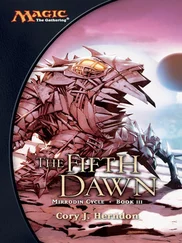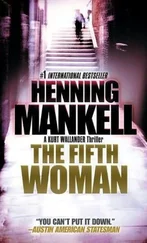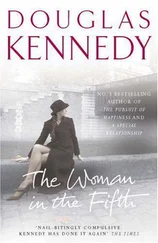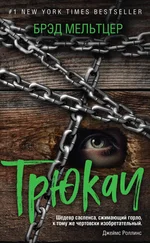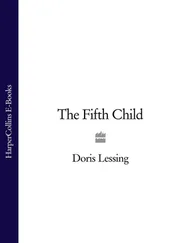Focusing on the distant buzz of Sable’s lawn mower and swaying from one leg to the other, Beecher didn’t respond. If he wanted, he could go help Marshall in the basement. He could scramble through the window and be right there, right by Marshall’s side. Even if everything went wrong and they got nabbed by Pastor Riis, at least they’d be together and Marshall wouldn’t be alone.
That’s what a real friend would do.
Indeed, as Beecher swayed there in the darkness, he could see in his mind’s eye just how much better it would be for Marshall to at least have a friend by his side.
But as he stared across at that small basement window—as the buzz of the lawn mower grew louder than ever—Beecher just stood there. And did nothing at all.
It was a decision he’d regret for the rest of his life.
103
One hour ago
Washington, D.C.
The Knight knew how it would end.
Today was a perfect day to kill a President. And in less than an hour, as a fine mist of snow tumbled from the sky, that day would come.
But as the Knight squinted at the silver-and-red tour bus at the end of the block, he understood that the President wasn’t the only one who would die today. No. Today was the day that the Knight would die too.
There was no arguing with it. From John Wilkes Booth, to Charles Guiteau, to Leon Czolgosz, to Lee Harvey Oswald, the four men who successfully murdered the President of the United States were all men with a cause. And when their task was complete, all four—every single Knight of the Golden Circle—lost their lives.
At first, the Knight thought he’d find a way around it. That somehow he’d be the one who’d figure out how to escape. But the more he studied his predecessors, the more God’s will became clear. Every fraternity had its rituals. And its rites of initiation. Indeed, if Nico had succeeded in killing the President, he’d be dead now too. There was no choice. To join this brotherhood, the cost of admission was life itself. But the reward? As others had said: Blood alone moves the wheels of history.
Up the block, a young couple walked straight at him, hand in hand, both of them looking at their own cell phones. Like every one of his predecessors, the Knight was careful, cautious. On his head, he wore a checkered newsboy cap. On his face he’d glued a fake gray beard. In his shoe he’d tucked a single small pebble, which gave him a convincing and realistic limp. It was an old CIA trick. Changing your face made you hard to spot; changing your walk made you an entirely new person.
Sidestepping the couple and heading farther up the block, the Knight checked every nearby bench, every tree, every parked car. No Secret Service. No undercover agents. And as far as he could tell, no sign of Beecher or any of Wallace’s staff.
He could feel it now. It wouldn’t be long until his initiation was complete.
For weeks, the Knight had been dreaming of this moment—truly dreaming of it. As he eyed the tour bus in the distance, he wondered if President Wallace had had similar dreams. Wallace wouldn’t be the first. Throughout his life, Abraham Lincoln was obsessed with his own dreams. Indeed, on the day he was shot, at what became his final Cabinet meeting, Lincoln told his Cabinet members that the same dream preceded “nearly every great and important event of the war.” It was a water dream.
In it, Lincoln said he was in some “singular and indescribable vessel” that was moving fast toward an indefinite shore. He told his Cabinet that he had the same dream that very night, and that it meant great news was coming soon. Within hours, John Wilkes Booth entered Ford’s Theatre. Great news was coming. Just as it would today.
At the end of the block there was a loud mechanical belch as the silver-and-red tour bus opened its front door and spit a mob of Dutch tourists onto the sidewalk. Taking it as a sign, the Knight lowered his head and slipped into the group’s jet stream. As they shuffled diagonally across the street, he walked right past a uniformed member of the Park Police who was standing guard on the corner, near the entrance to the Vietnam Veterans Memorial.
On his right, at the sight of the Lincoln Memorial’s grand marble staircase, the Knight’s skin began to prickle. In his jacket pocket he fingered the brand-new gun he’d bought for the occasion. In his other pocket was a hunting knife, a set of old playing cards, and the plaster Lincoln mask that he knew was now his totem.
Scanning the crowd and its steady stream of tourists, the Knight picked out two other members of the Park Police, but still no Secret Service agents. For a moment, he was worried he might’ve misjudged the President—but as always, he trusted in his predecessors.
When the third Knight, Leon Czolgosz, was a boy, he used to go hunting with his brother. Leon always carried the gun. But it was his brother, armed with only a stick and a burlap sack, who was the smart one. Approaching a rabbit hole, his brother would set a small fire on one end of the hole, then cover the other end with the burlap sack. Once the smoke started, like clockwork, the rabbit would take off, scurrying right into the sack. Best of all, there was no blood. Until later.
It was a lesson not lost on the Knight. For days now, from the murder at St. John’s to this morning at the hospital, everyone thought these were copycat crimes or some sad tribute to Nico’s early days. But for the Knight, each attack was simply a small fire.
At this moment, he’d sent Beecher scurrying down one rabbit hole, and the President down another. All the Knight had to do was hold tight to the burlap sack.
“ U ziet de architectuur ,” the Dutch tour leader announced, leading the crowd along the main plaza and pointing out the Reflecting Pool on their left. Just ahead, a tourist carrying a tennis bag glanced around, pretending to enjoy the sight. Undercover Secret Service, the Knight knew. Tennis bags were where they hid the M-4 assault rifles.
Sticking to the base of the famous steps, the group of Dutch tourists headed for the open door on the far left side of the monument.
Just ahead, a small sign showed pictograms for men’s and women’s restrooms and a bright white arrow that pointed dead ahead. Through the open door, beyond the restrooms, was a small museum exhibit and a wheelchair-accessible elevator for those who couldn’t walk the steps to the statuary chamber. But what the sign didn’t say was that there was also a mechanical and electrical room that ran underneath the monument and out the back of it, making it the ultimate private entrance for a President who wanted to make a surprise unannounced visit.
Feeling his skin prickle more than ever, the Knight closed his eyes for a moment, thinking back to the original Knight—the Sacred Knight known as Vignolles. For centuries, he’d been credited with creating the suits that we still see on modern playing cards. Spades, hearts, clubs, and diamonds, each one representing a part of medieval society. But what had been lost to history was the fact that, from the start, there weren’t just four suits. There were five .
Opening his eyes, the Knight still felt the aching soreness from the white ink tattoos he’d drilled into his own body. Four symbols—from his four predecessors—marked his back, his thighs, and his left hand. He did the last ones this morning. All were invisible to the naked eye. But now, as he pulled his left hand from his pocket and looked down at his open palm, he saw the bold black ink (there was no hiding now) of the final symbol—the secret symbol: a small crescent moon. Yes, the four suits represented the parts of society, but it was the moon that represented the final part, the part that made the circle complete: the Enlightened.
Читать дальше

